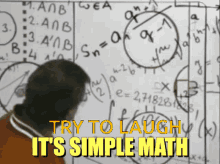I have been wondering about this for a while. What is everyone's process when figuring out a boundary and rationalizing it in Civil3D? I am only a survey tech, but I am very much ingrained in the office side of things when it comes to what the PLS's are doing at our office and I know how they do it.
Typically what happens is they plot the deeds/plans (we are in a metes and bounds state if that changes anything) then they import the points into Civil 3D and move the linework from the deed/plan plotting to the points. Then from there they best fit the linework to the monuments found and determine the boundary that way.
They are adamant about never?ÿchanging the deed or plan calls unless you have SOLID evidence that it is wrong. So if a found monument is off from what they determine the boundary to be from other monuments, they will show it as such.?ÿ
Then I usually take that finalized boundary placement and use that to draft the plan, and they use that to stake the corners not found.
Is this standard everywhere or just my company? Just trying to not fall into one way of doing things if there is a better way for when I get my license.
So if a found monument is off from what they determine the boundary to be from other monuments
Many consider it best practice to show both Record and Measured bearings and distances when there is a difference but no evidence the monument has been disturbed.
And which of those monuments do you take as perfect to say another is off?
Aw yes the record geometry must be perfect.
Suppose a lot is 50’x100’ and the corners are 90° per the Deed. A surveyor sets pipes at the corners as well as can be expected. Naturally the property owner thinks these are the corners and string lines between them.
Years later a new surveyor comes along and finds the pipes are all “off” by minor amounts but doesn’t set new pipes or otherwise notify the owner. This seems silly to me.
My practice is to show record vs measured. I can’t even follow my own survey and get exactly the same answer.
@bill93 I’ve been exposed to that idea since joining this forum and a Reddit forum. From what I have seen that is not common practice where I’m from. As far as I can tell everyone does it at least in a similar way to the way the 2 PLS’s I work under do it. I can’t see behind the curtain on how they get there due to only seeing the final recorded document obviously. Their rationale is if everything else works (within reason) to one another then that the odd man out is most likely wrong. Whether that means it’s been disturbed, it was set wrong from the last surveyor, or any number of other factors. I am 100% not saying that it’s “correct” but I am just explaining that it’s how I’ve seen it done
If you are not going to set another monument, then the found monuments are never off. I don't understand why everyone gives the deed the presumption of correctness when it is the monuments that should have the presumption of the correctness. If a surveyor finds disagreement between the deed and the monuments but not enough disagreement to set a new monument then the DEED is off. The monuments are not off nor should they be referred to as off. It is the deed that is imperfect.
And which of those monuments do you take as perfect to say another is off?
Exactly. We don't get to have it both ways. Best fitting to monuments, and then blowing off those monuments in favor of record geometry, is poor practice and borderline negligent - especially if the surveyor is calling those original and relied-upon monuments "off" on the face of the survey. It certanly doesn't protect the public, and makes us look like fools to boot.
There are always going to be some oddball things on certain surveys when you get into the weeds, but a monument either controls the corner/line or it does not. If it controls then we show what we measured versus the existing record...because we are adding to the record, not overriding or dismissing or wiping it out.
The record calls are but one piece of evidence for placing the boundary on the ground. They may be (often are) overruled by evidence that is actually on the ground.
This is where GIS can be the reckoning of the data, esp when they're using applications like Local Government Model( LGM) and parcel fabric. It allows the boundary or parcels to be adjusted to the new survey data, without all the slivers and orphaned islands etc.
I was just floored when I realized so many GIS shops dont use it, mostly because they're not skilled enough or just like the way it was set up originally.
Save the surveyors who are using it and training the staff too, most tools in GIS could be used for better work.
We have been getting a lot of planning people pushing this agenda of Record measured and calculated D&D on the drawings and the survey community is Iike...um wait, why is the planning dept telling us how to survey?....
it will only get worse if the profession lets people whom aren't licensed to peddle their influence and change expectations and then regulate that as what is the standard...
It is the deed that is imperfect.
You've never read one of Kent's descriptions?
If I'm convinced that the information in the deed is within a reasonable tolerance, based on my surveyed locations of found, called for monuments (everyone knows that a monument is a broad term and can mean many different things), then the deed is perfect and that's what I'll put in my report. If I find a substantial difference, then I show record/deed in my report.
I'm getting ready to record one that has a 15' discrepancy; I've applied the rules of construction for a boundary survey, and this is what I will show in my report.
My client hired me because their neighbor had a survey done that used the deed dimensions instead of monuments called for in the deed, and showed my client's shed over the line.
Every survey I do; I do it like I will be defending it in court.
You sleep better at night, knowing you can defend your surveys in court; because you use sound, survey method; proven in settled court cases.
I hope everyone is having a great weekend; I know I am!!!
Dougie
This may blow the minds of many of you out there. This is straight out of the Official minimum standards for surveys in Kansas.
5. Any newly written Boundary Description shall include the name and license number of the preparer,
along with the date of preparation within the caption or body of the description.
You mean to tell me; only licensed land surveyors can write new property descriptions in Kansas!?

I believe the way the law is written is that it should be a licensed land surveyor..........but lawyers can write them, also.
I started to end with "as well" instead of "also" but we all know they can't write them as well as we do.
shall include the name and license number of the preparer,
lawyers can write them, also.
Lawyers have numbers?
This is why mathematicians had to invent the concept of imaginary numbers. You know i-squared equals minus one.
mathematicians


I usually approach these from two perspectives and document how the two relate to each other. The record, deed or subdivision, is some version of a ‘perfect world’, where the monuments and physical evidence on the ground would match the record perfectly. But that’s fantasy and in real world everything is less than perfect to varying degrees. I try and approach the survey with the intent to document how well the two relate, or don’t and how I reached those conclusions. The end result is only a professional opinion based accepted practices and case law. The end result should be sufficient for another professional to follow how I reached those conclusions and be sufficiently documented to remove questions on how those conclusions were arrived at. Showing record and measured is just one part of it. The resulting product should answer the questions and not create an entirely new set of questions. That’s the goal anyway. With boundaries it’s never a straight forward math exercise.
Just because I'm paranoid, doesn't mean they aren't out to get me.
@holy-cow it amazes me that many Surveyors don't understand the difference between the descriptions that we write, sign and seal and the actual deed. A deed is a legal document and we are not lawyers, only an Attorney can prepare a deed and the smart ones simply plagiarize our descriptions in the preparation of their deed documents, thus, you never see our signature and seal on a deed, only a reference to our surveys.
I do things similar to you but with a twist. When I am resolving a survey I will plot the deed and subdivision outbounds in a title survey situation. If I have no requirement to work in State Plane or subdivision plan coordinates, I'll work in assumed coordinates and rotate/translate my assumed points into my plotting and take it from there moving my points to the best fit solution to my plotting.
There are a ton of things to consider when it's not an "easy" survey and when found monuments do not agree with the rest of the discovered evidence, I don't plant a new one a foot or two (or less away), I send my resolution off to my survey techs to draft and note the offsets to what was found and not in agreement with by determination.
BTW, I work in a Colonial state.
Is this standard everywhere or just my company?
That sounds mostly standard to me. Except this has me wondering a bit...
So if a found monument is off from what they determine the boundary to be from other monuments, they will show it as such.
That's fine if they want to reject a monument but hopefully they are explaining their reasoning in a narrative and also setting a monument in the spot they've determined to be correct.
There might be one case in a few thousand where the person typing up the deed included reference to a survey. That's here. May be different elsewhere.